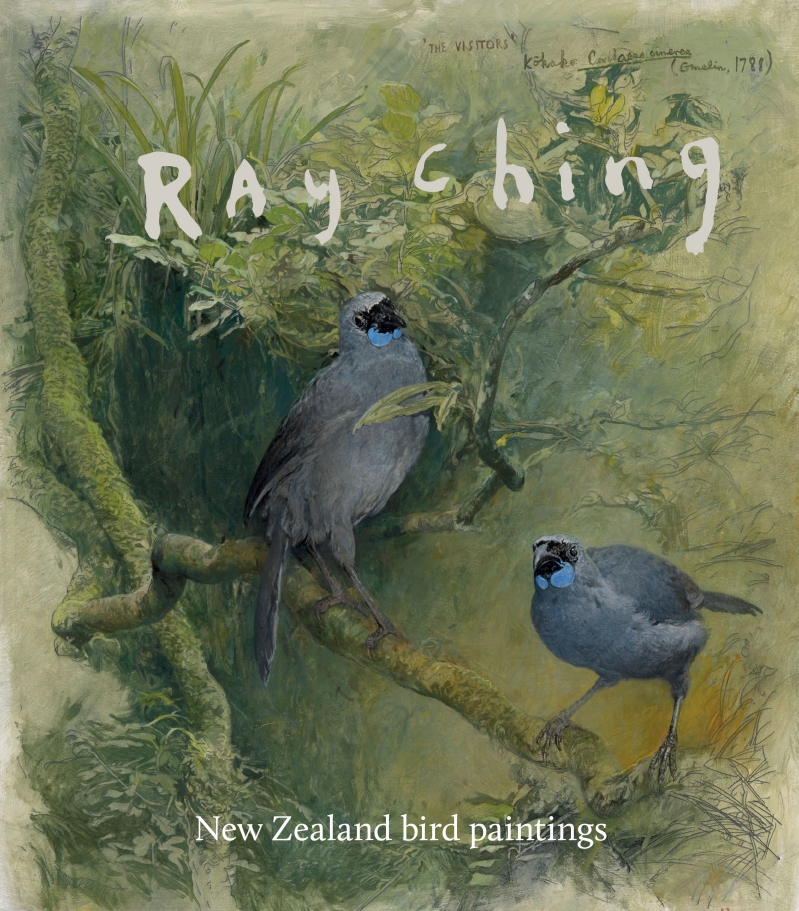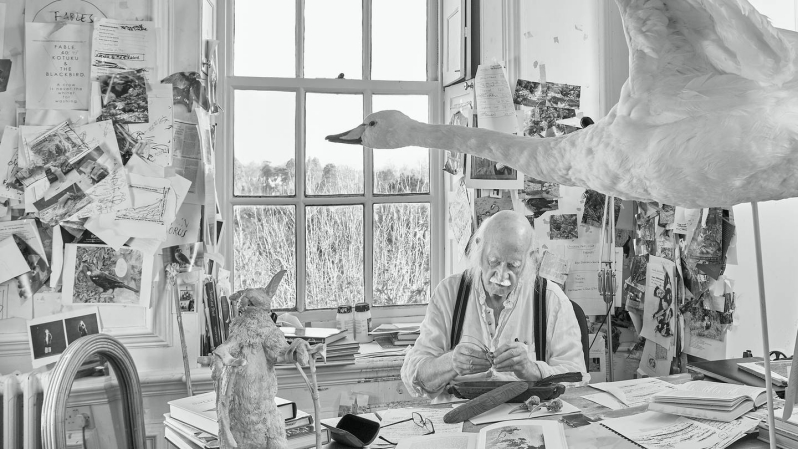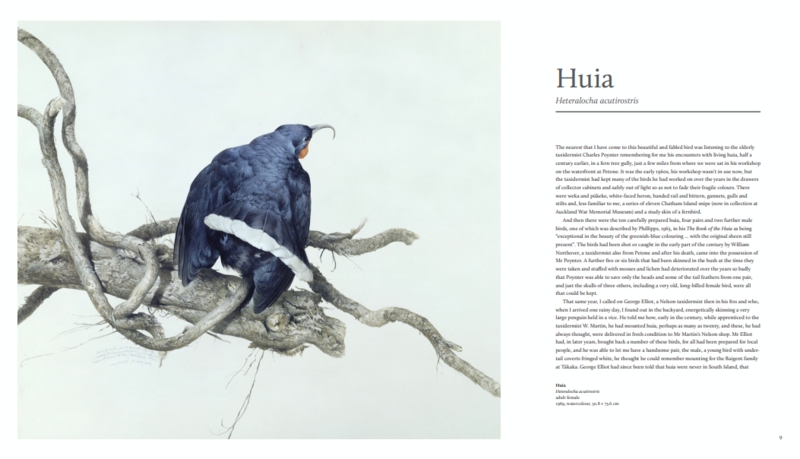Reviewed by John Daly-Peoples

Ray Ching
New Zealand Bird Paintings
Potton & Burton
RRP $79.99
Reviewed by John Daly-Peoples
Ray Ching is one of the world’s outstanding wildlife artists who has been producing paintings, drawings and and publication for over sixty years. While having lived in the UK for many years his work has largely focussed on antipodean birds. These have included exhibitions and publications such as “Aesop’s Outback Fables” and “Aesop’s Kiwi Fables”. His most successful book was “The Reader’s Digest Book of British Birds”. Published in 1969 it became the world’s most successful and biggest selling book of bird paintings, translated into over ten European languages and appearing in many editions.

His latest publication is simply titled “New Zealand Bird Paintings. This mundane title belies the sumptuous visual record he has produced and his paintings are as important as the illustrations by J.G. Keulemans in the nineteenth century publication “Buller’s Birds of New Zealand”.
The book features about seventy different birds all rendered in extraordinary detail along with preparatory drawings and texts.
His wide-ranging passages of writing provide both a personal and ornithological approach to each of the birds. The artist writes about his early encounters with the birds, their history, references to other writers and ornithologists which helps give a greater understanding of the birds and their place in New Zealand history and landscape.
Ching notes that the impact of colonialism, pasteurism and deforestation has had a major impact on the habitats of many of our birds such as the flightless kakapo nearly hunted to extinction by rats, stoats and dogs.
On the other hand, the Kahu or swamp Harrier which is essentially an open marsh, scrub or pastureland bird was aided by the destruction of forests which gave way to grassland and thus extra habitat for the bird.
Writing about the Kiwi he notes that early illustrators had great difficulty in describing the bird from the skin of the first birds sent back to England as it did not conform to the structure of other birds and he notes that the bird is still a challenge to depict
His paintings of each of the birds vary. Some are painted in the almost standard ornithologic manner with strict attention to detail and colouring while with other he provides environmental setting.

In many of his paintings over the years he has attempted to anthropomorphise his birds and in Dawn Chorus he depicts a group of kakapo surrounding the sheet music of Pokare kare ana signifying their melodious call and Ching provides interesting information about the special way the bird builds sound reflectors to aid in its mating call.
In the section on the Tui eight of the birds are illustrated each of them has a different pose and personality
Some of the birds perch as with the Korimako (bellbird) some are animated like the two fighting North Island Kiwi while other are depicted in flight such the Haast’s Eagle and the Pipiwharauroa (Shining Cuckoo).

His Huia sits with its back to the viewer on an almost abstract branch all the better to show of the bird’s white tail feathers while the two Kea are illustrated in an alpine environment behind them. The Toutouwai (North Island robin) is shown in the forest undergrowth and the Tauhou (Silvereye) almost obscured by the yellow kowhai they are feeding on and the Kaka is shown eying some puriri berries.

The paintings in the book are interspersed with studies drawn by the artist showing his ability to capture not only the shape and textures of the birds. The various paintings and drawings done over a number of years also illustrate the artist changing approaches to the depiction of the birds.
The works combine the artist’s extraordinary attention to detail of the birds as well as well astute rendering of foliage and landscape which help give context to the birds and their environments.